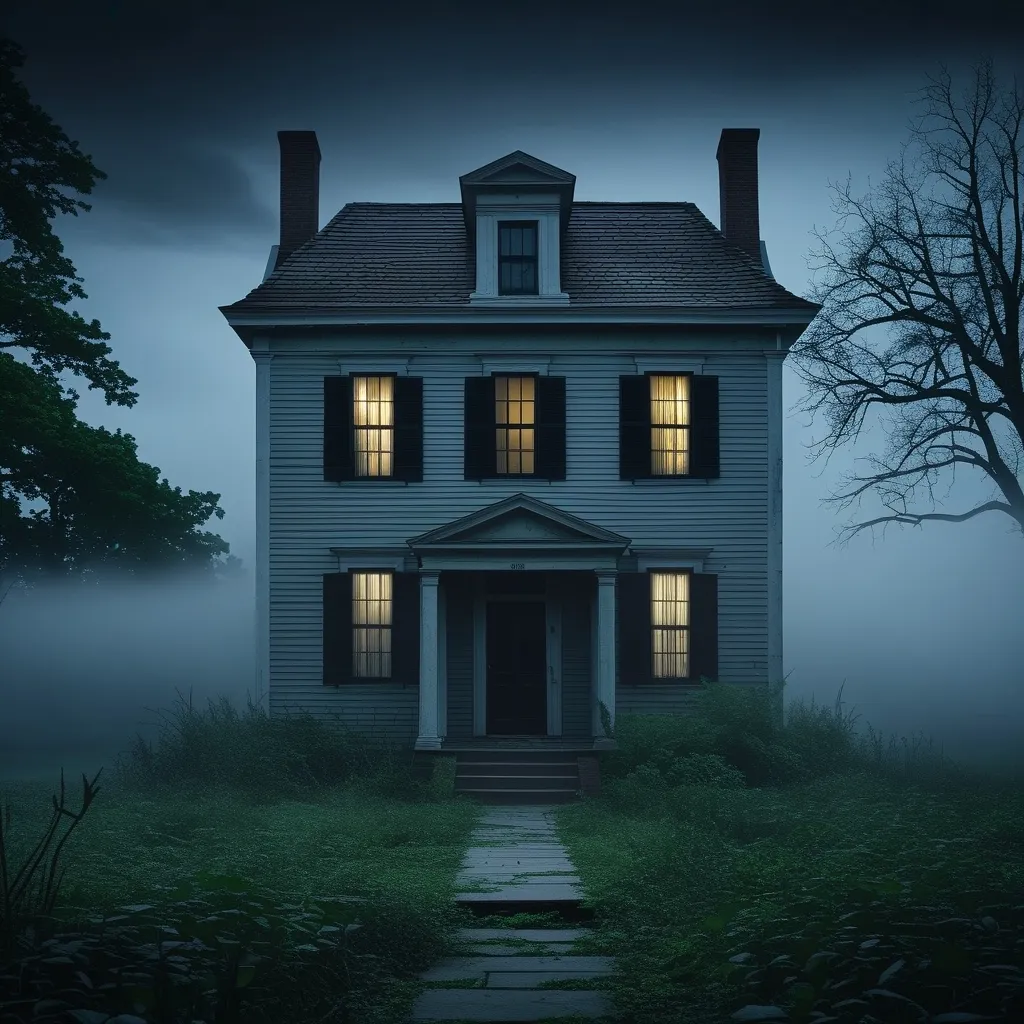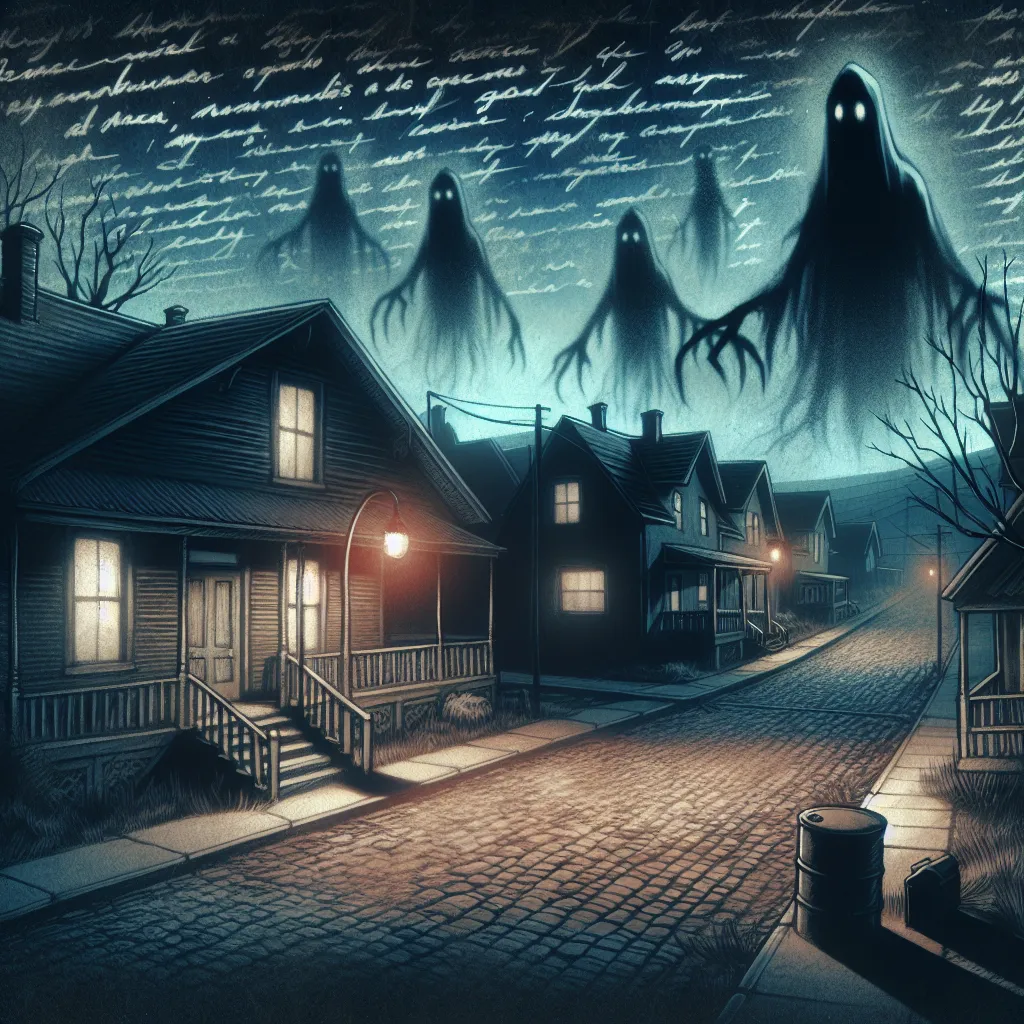The Amityville Horror House: A Chilling Tale of Terror and Mystery
Nestled in the quiet suburb of Amityville, New York, stands a house that has become a legend in its own right. The Amityville Horror House, with its infamous address of 112 Ocean Avenue, has captivated the imagination of millions and spawned countless debates about the nature of the paranormal.
It all began on a fateful night in November 1974. Ronald DeFeo Jr., a troubled 23-year-old, committed an unspeakable act that would forever change the course of the house’s history. In a horrifying rampage, DeFeo murdered his entire family while they slept - his parents and four siblings. The brutality of the crime sent shockwaves through the community and set the stage for what would become one of America’s most enduring ghost stories.
DeFeo’s motivations were as chilling as the crime itself. During his trial, he claimed to have been driven by “demonic voices” in his head, convinced that his family was plotting against him. Despite these claims, he was found competent to stand trial and ultimately convicted of six counts of second-degree murder. The court sentenced him to six consecutive 25-year-to-life terms, effectively ensuring he would spend the rest of his days behind bars.
But the story of the Amityville Horror House was far from over. In fact, it was just beginning.
Enter the Lutz family. George and Kathy Lutz, along with their three children, moved into the house in December 1975, just over a year after the DeFeo murders. They snagged the property at a bargain price, thanks to its grim history. Little did they know, they were about to embark on a terrifying journey that would make them infamous.
From day one, the Lutzes reported strange and frightening occurrences. It was as if the house itself was alive, pulsing with an evil energy. They spoke of bizarre odors wafting through the rooms, inexplicable cold spots, and even green slime oozing from the walls and keyholes. It was like something out of a horror movie, except this was their reality.
George Lutz found himself waking up every morning at 3:15 AM - the exact time the DeFeo murders took place. Coincidence? The Lutzes didn’t think so. They even brought in a priest to bless the house, but that only seemed to make things worse. The priest reportedly heard a voice scream “Get out!” and advised the family to avoid a particular room.
But the paranormal activity didn’t stop there. The Lutzes claimed to witness all manner of supernatural phenomena. Garage doors opened and closed on their own accord. An invisible force knocked a knife off the kitchen counter. Perhaps most terrifyingly, George and his son Daniel reported seeing a pig-like creature with glowing red eyes peering at them through a window.
The experiences grew increasingly intense and personal. George claimed to have woken up one night to find his wife Kathy levitating above their bed. In another incident, their sons Daniel and Christopher were allegedly found levitating together in their beds. It was as if the house was toying with them, pushing the boundaries of what they could endure.
After just 28 days, the Lutz family had had enough. They fled the house in terror, leaving behind all their belongings. Their story would go on to become a sensation, inspiring books, documentaries, and a slew of Hollywood films.
But as with any tale this extraordinary, skepticism soon followed. Many questioned the validity of the Lutzes’ claims, suggesting it might have been an elaborate hoax concocted for financial gain. The family’s former lawyer, William Weber, even alleged that the story was dreamed up over several bottles of wine.
In an attempt to prove their honesty, George and Kathy Lutz underwent polygraph tests, which they passed. But the debate raged on, with believers and skeptics alike passionately arguing their positions.
Regardless of the truth, the impact on the Lutz family was undeniable. Daniel Lutz, who was just a child during their stay in the house, has spoken about the profound psychological trauma he endured. In a documentary, he shared his ongoing nightmares and the feeling that the house had effectively ruined his life.
The Amityville Horror House also attracted the attention of famous paranormal investigators. Ed and Lorraine Warren, renowned for their work on high-profile haunting cases, visited the house to conduct their own investigation. Their experiences were just as chilling as those reported by the Lutzes.
Ed Warren claimed to have been physically pushed to the floor by an unseen force during their visit. Lorraine reported sensing the presence of demonic entities and even claimed to have seen visions of the murdered DeFeo family. The Warrens theorized that the land had a dark history, suggesting it may have been used for black magic rituals or as a site for housing sick Shinnecock Native Americans. However, these claims lack historical evidence to back them up.
Another investigator, Hans Holzer, put forward the theory that the house was built on a Native American burial ground. He believed this could explain the negative energy surrounding the property. However, historians have cast doubt on this idea, pointing out that the Shinnecock tribe lived further east on Long Island.
Since the Lutz family’s departure, the Amityville Horror House has changed hands several times. Its owners, weary of the constant attention from curious onlookers and thrill-seekers, have made significant alterations to the property. The iconic quarter-moon windows have been changed, and even the address has been switched from 112 to 108 Ocean Avenue in an attempt to deter visitors.
Despite these efforts, the legend of the Amityville Horror House persists. It remains one of the most famous haunted houses in the United States, a testament to the enduring power of horror and mystery in American culture.
The house was last sold in 2017 for $605,000, a price significantly lower than its original asking price. It seems that even decades later, the shadow of its dark history still looms large.
So, what are we to make of the Amityville Horror House? Is it truly a portal to supernatural terror, or simply the backdrop for an elaborate hoax? The truth, as is often the case with such matters, likely lies somewhere in between.
What we do know is that a terrible tragedy occurred within those walls. The DeFeo murders were all too real, a stark reminder of the horrors that can unfold in the most unexpected places. Perhaps it’s this kernel of truth that gives the Amityville legend its staying power.
The human mind is a powerful thing, capable of conjuring terrors both real and imagined. In a house with such a gruesome history, it’s not hard to imagine how the power of suggestion could lead to experiences that feel supernatural. The creaks and groans of an old house, the play of shadows in the night, the weight of knowing what happened there - all of these could contribute to a sense of otherworldly dread.
Yet, for those who lived through it, like the Lutz family, the experiences were all too real. The fear they felt, the sleepless nights, the psychological toll - these were tangible consequences of their time in the house, regardless of whether one believes in ghosts or not.
The Amityville Horror House stands as a testament to the power of storytelling. It’s a tale that has captured the public imagination for decades, blurring the lines between fact and fiction, between the explicable and the supernatural. It forces us to confront our beliefs about the nature of reality and the possibility of forces beyond our understanding.
In the end, whether you believe in the haunting of the Amityville Horror House or not, its impact on popular culture is undeniable. It has become a touchstone for discussions about the paranormal, a benchmark against which other haunted house stories are measured.
The house at 112 Ocean Avenue serves as a reminder that sometimes, the most terrifying stories are those that have a foot in both worlds - the real and the imagined. It’s a place where tragedy and mystery intertwine, creating a narrative that continues to fascinate and frighten in equal measure.
As long as there are those willing to listen, the story of the Amityville Horror House will continue to be told, debated, and reimagined. It remains a chilling testament to the enduring power of a good ghost story, and a sobering reminder of the real-life horrors that can unfold behind closed doors.
In the quiet streets of Amityville, the house stands as a silent sentinel, its secrets known only to itself. For those who pass by, it serves as a tangible link to a tale of terror that has become an indelible part of American folklore. The Amityville Horror House may be just a house, but it’s a house with a story - one that continues to captivate and terrify, long after the last occupants have fled.






